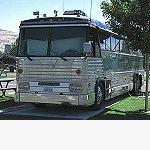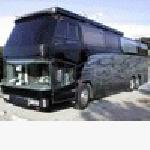| Author | Message | ||
| Roger Baughman (Roger)
Registered Member Username: Roger Post Number: 119 Registered: 11-2006 Posted From: 69.232.70.176  Rating: N/A |
I tryed the archives but could find no good info on this. I want to install a seperate a/c system for a driver and passenger seat specific cool air. Starting with a belt driven alternator off the 8v71 to two 12 volt batteries to a 12 volt inverter. I currantly have a new 24 volt alternator. My question is, can I use this 24 volt alternator to charge the batteries and also use the 12 volt inverter? I am assuming that I will need somesort of a reduction device to reduce the 24 volts to 12. I just don't know if this can be done or should I just get a auto type 12 volt alternator? | ||
| Sean Welsh (Sean)
Registered Member Username: Sean Post Number: 920 Registered: 1-2003 Posted From: 67.142.130.18  Rating: |
Roger, My advice is to sell the 12-volt inverter and get a 24-volt model, rather than try to trade the 24-volt alternator out or do any voltage conversions. The reasons are numerous:
I would expect you would not pay much more for a refurbished 24-volt inverter than you would get on, say, eBay for your 12-volt model. I also strongly suggest you take this opportunity to upgrade to a true sine wave model (if you have not already) to run air conditioners. HTH, -Sean http://OurOdyssey.BlogSpot.com | ||
| Tim Brandt (Timb)
Registered Member Username: Timb Post Number: 375 Registered: 10-2003 Posted From: 74.244.14.221  Rating: N/A |
Just to think outside the box a little. For the expense involved in doing this electrically I would think you could do an automotive style belt driven compressor AC system for the front for a lot less. The maintenance facility I have the bus serviced at sells complete systems installed or will sell you all the parts to install yourself for around a $1000. Supposed to be large enough to cool the front third of the coach. | ||
| Chuck Newman (Chuck_newman)
Registered Member Username: Chuck_newman Post Number: 377 Registered: 1-2005 Posted From: 75.15.95.46  Rating: N/A |
Sean, Since you're on the subject, what AWG welding cable would you recommend for batteries-to-4kw inverter (MS4024), at a length of 14 feet? 4024 max rated input battery current 204 ADC. The manual is not specific on sizing vs length. Thanks. | ||
| Sean Welsh (Sean)
Registered Member Username: Sean Post Number: 921 Registered: 1-2003 Posted From: 67.142.130.41  Rating: N/A |
Chuck, I like 4/0 for the 4024, however, 2/0 will give you an acceptable voltage drop of 2.1% at 200 amps for your 14' run, at 50°C. (4/0 will yield a 1.3% drop at that length.) I also prefer DLO to welding cable. -Sean http://OurOdyssey.BlogSpot.com | ||
| Roger Baughman (Roger)
Registered Member Username: Roger Post Number: 120 Registered: 11-2006 Posted From: 69.232.70.176  Rating: N/A |
Thanks to all for your info and advice, Roger |